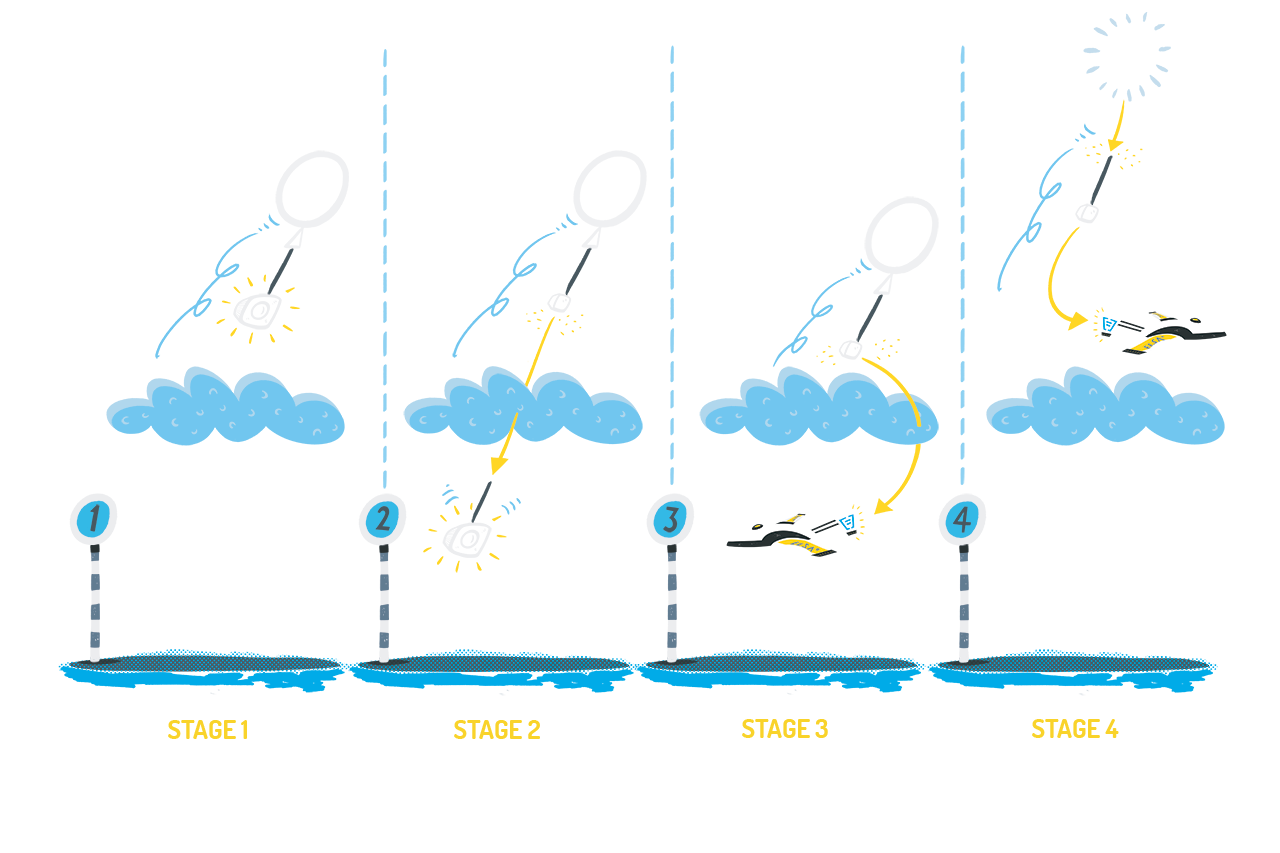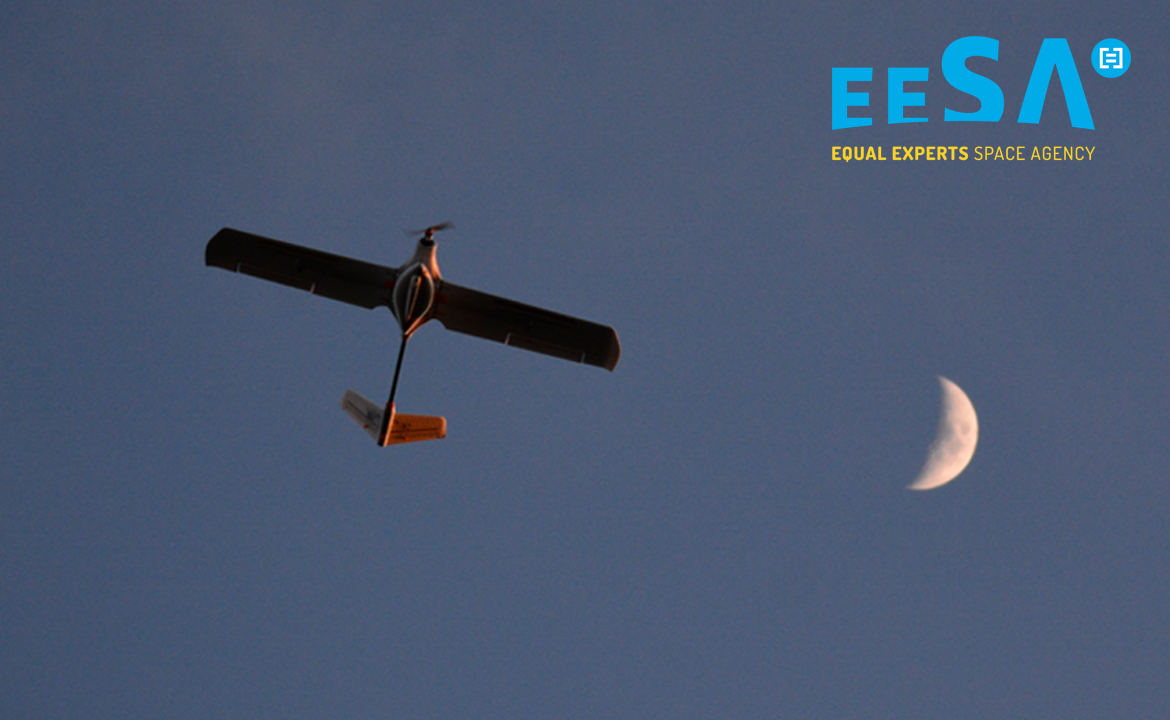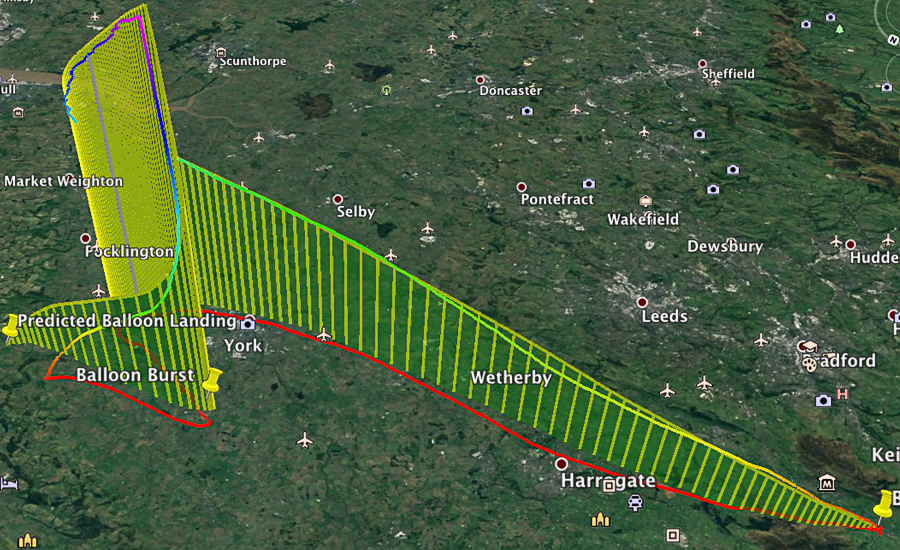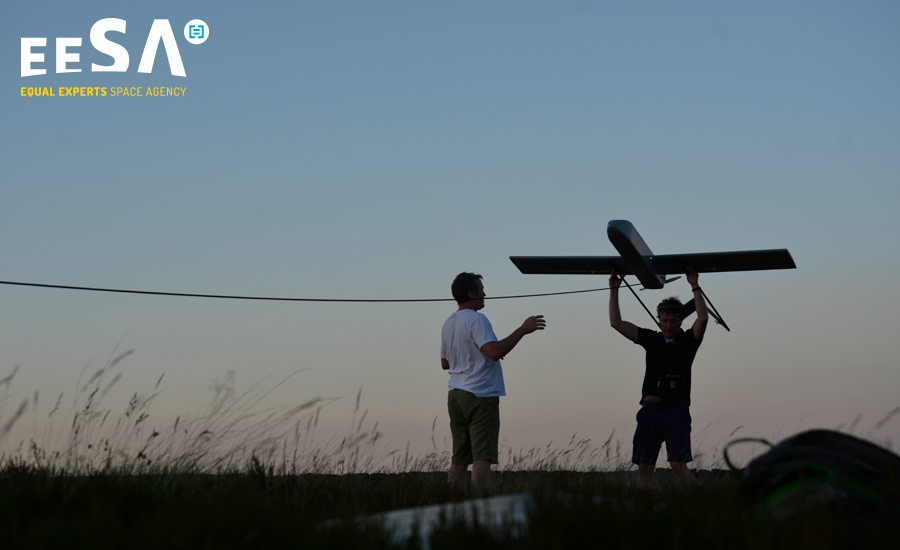Introducing EESA
Taking Equal Experts to new heights
EE Space Agency
EESA is supporting EE Associate and Technical Architect Tim Squires in his attempt to break a World Record.
Our mission
Achieve the highest altitude in horizontal flight by a winged aircraft.
The civil record is currently set at 19,500 metres; NASA made it to around 29,500m. We’re aiming for 30,000m.
We’ll be floating our swish unmanned aerial vehicle (UAV) to these heady heights using a balloon, before allowing it to undock and glide back down to earth.
We already have some form here. Tim recently made the news by launching a balloon to the very edge of space with the Scout troop he leads in Shipley, Yorkshire. Now that we’ve established a basic capability, it’s time to push ourselves.
Our mission is complex
Our first test flight will float a balloon up to over 30km, with the aim of testing two things:
- To prove we’ve beaten the record, accurate GPS will be required to provide altitude data. But thanks to GPS regulations, we can’t be sure we can receive GPS data once our unit goes above 12km in altitude. We’ll be testing our GPS unit’s flight mode to see how well it works (or not)
- We need to be sure our balloon can lift around 3kg of weight to our target altitude. For this first test, we’ll attach a dead weight to check.
The second test flight will establish whether our release mechanism works in the rarefied air at 30km in height. During the record attempt, it will be dropping our UAV; this time around, it’ll be dropping another test load. Can’t be too careful.
Our UAV must be able to fly back to earth safely from high altitude. To help us be confident our approach will work, we’re planning to test this with a flight from between 5-15km – an altitude where we’re confident the plane will easily fly. We’ll need special exemption status from the Civil Aviation Authority for this to go ahead.
If the stages above go to plan, it’ll be time for the real deal.
- Our balloon will lift the UAV to over 30km
- The UAV will be released
- It will drop straight down for at about 500m. Once enough speed is reached – it will level out and achieve horizontal flight, hopefully high enough to break the record.
- The UAV will circle, gradually losing altitude and heading towards the landing area (and well away from any air corridor).
- The balloon will continue upwards to about 36km, at which point it will burst, allowing its onboard camera to descend by parachute.
Successfully pulling this off will require several test flights to establish each element will work as planned:
Why’s EE sponsoring this record attempt?
Space exploration may not be our bread and butter, but in many ways this project is actually pretty typical of our work:
- It’s a difficult technical challenge
- Tackling the problem allows us to learn new skills and techniques
- It brings lots of people together to work as a team
- We’re trying to break new ground via the innovative use of technology
- It’s a lot of fun to work it all out – and build something special!





